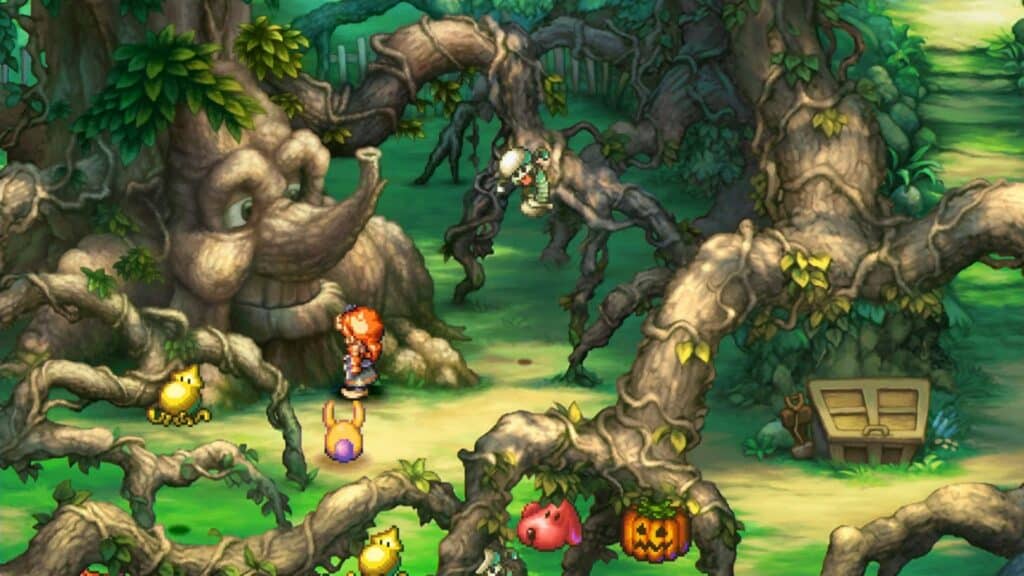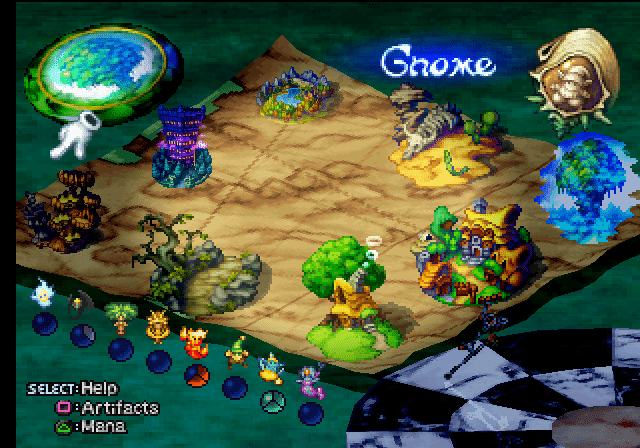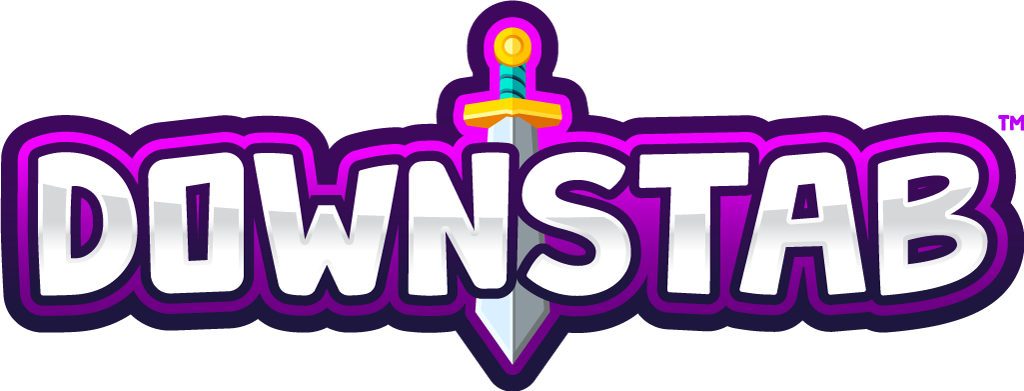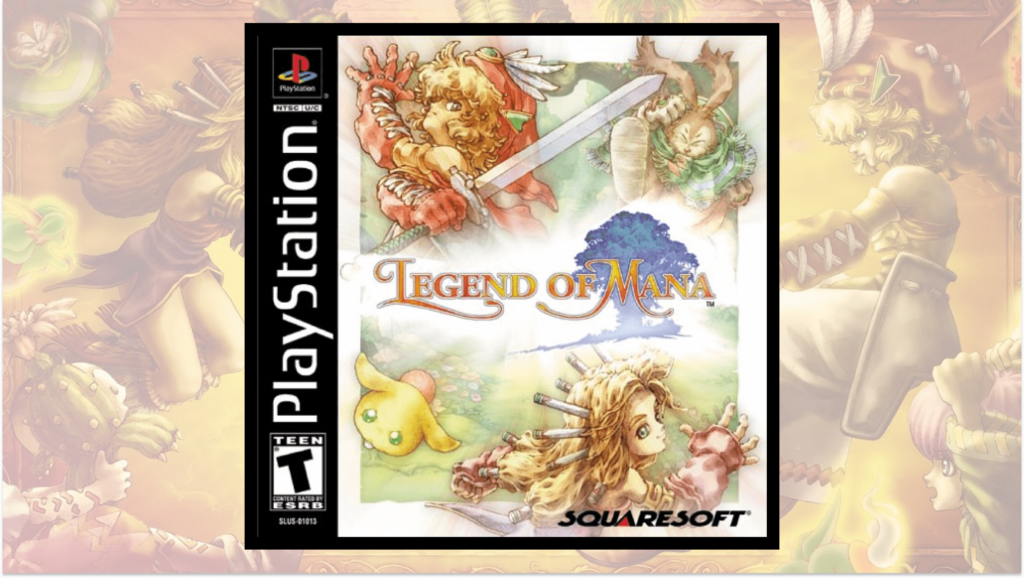Growing up and discovering I loved role playing games was a wonderful time. Zidane and crew from Final Fantasy IX kept me up many a night battling Cactaur’s and grinding AP. Diablo on the PC was a renaissance for action games for me, and I never looked back. Nintendo’s own Pokemon games kept my friends and I busy catching them all and thinking about trading our cherished buddies to one another. And those are only a few examples of the game played back then.
And that’s likely the case for many of you. There were just so many games to play, you couldn’t play through everything. For every FF9 and Chrono Trigger you did play, there were some Brave Fencer Musashi’s and Legend of Dragoon’s you only dabbled with and never finished. Even worse, there might have been some games like Lunar 2: Eternal Blue or Phantasy Star IV you never played at all.

The latter was the case for me until very recently with Squaresoft’s action RPG Legend of Mana. The game isn’t a Final Fantasy game, if you couldn’t tell from the title, and as such I relegated it to the sidebin of RPGs at the time. Why play this non-mainstream RPG when I could just pick up FF7 and join the hype train everyone else is on? Time is a precious thing. I chose the games I did because I wanted to play them then, and I am glad I was able to enjoy them. Now as time has moved on, I can slow down a bit, play what I want, and finally get into something like Legend of Mana.
My immediate thoughts with Legend is how beautiful the game looks. Even on the original Playstation, in 2022 when I played it for the first time I was still impressed with the visuals. The use of color, the diorama like setting of the overworld, the creativity of the character design, the detailed backgrounds and spritework… it all comes together to make something truly artistic and fun. A testament showing video games as art can live longer than games going for “realistic” visuals. If you don’t believe me, pop in something like Final Fantasy VIII and play for a bit. Sure, it’s a good game, but man did those sprites leave a lot to be desired. After that debacle, try playing Legend of Mana and appreciate how wonderful the artistic design holds up. I’ll wait…

Central to any RPG is the storyline. Legend of Mana does something very different here, even for the already off-kilter Seiken Densetsu/Mana series as a whole. Rather than following a main plotline, players are given then option to create a sequence of mini events that lead to a larger overarching storyline. This is done by placing a story element square connecting your prior world/zone you played in with the next one. In this sort of city-building approach, you can chose how your game route unfolds. Going from a bustling, busy town scenario into a thickly dense forest, followed up by a breezy beachside jaunt is just one of the paths you could take. Admittedly I didn’t play through the entire game just yet, but I thought this was a fun approach! I didn’t know which area would be next, and I had a bit of an option on where we could go. Critics at the time were a bit apprehensive of this feature (and I could understand why given the landscape of games at the time), but I applaud Square for trying something different.
We can’t talk RPGs without talking about combat. Just like the stranger take on storytelling, Legend of Mana has a stranger take on it’s action RPG combat. Battles take place in real-time right there on the map where you see the foe. Up to two companions can join you, but both are controlled by the computer. Boss fights work in a similar way but are always longer and have more drawn out tactics. I likened this style of gameplay to something like Tales of Destiny or Star Ocean: The Second Story, but Tales of Mana feels a bit like its own thing. Action RPGs like this aren’t quite my jam: they’re fine for what they are, but I think I’d either prefer faster action like a Diablo game, or more slowed down action like a turn-based RPG would offer. Nothing wrong here at all, just a personal preference.

Looking back now and thinking about gaming during the year 2000, I can see why this game received its lower status amongst gamers. RPGs were a mainstream genre thanks to the likes of Final Fantasy VII and many more. The Playstation console itself wasn’t a toy for kids like Nintendo’s consoles may have been seen as. The games that released and performed well in North America were often more mature in tone, or at the very least not something you’d likely see on the prior generation of game consoles. Legend of Mana sticks out as counter to all of this. Now though, some 20+ years later, gaming has evolved further. We can appreciate the title for what it achieved. We can now see the vision, the passion, and the approach to game design we hadn’t otherwise seen all too often. There’s a reason these games live on years and decades later: it is so those of us that skipped out on it the first time around can finally enjoy a game that did something different.
Laters,
Jsick






